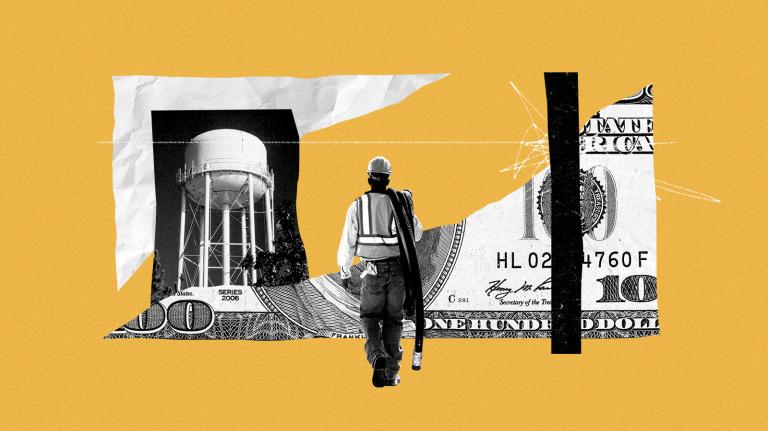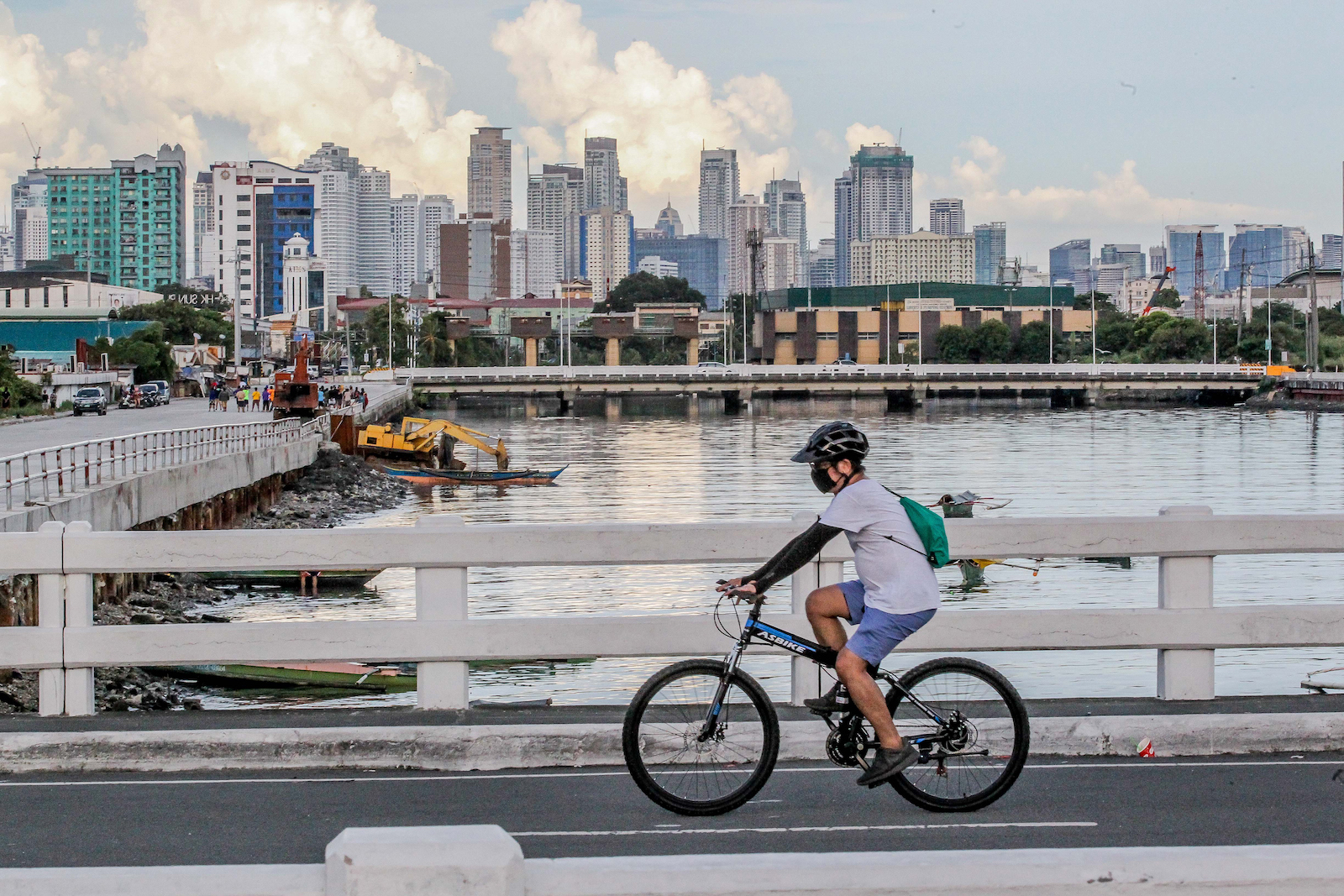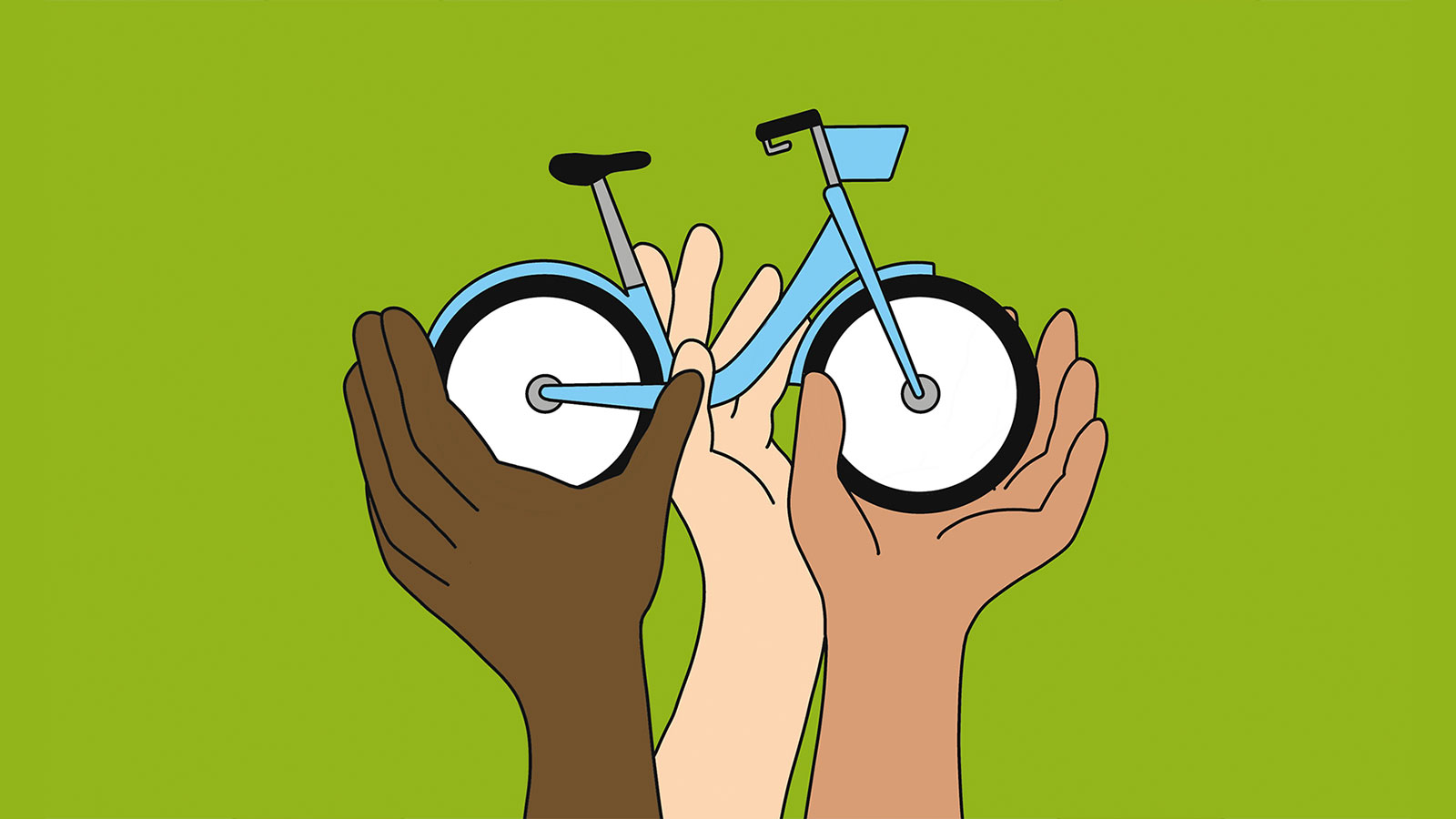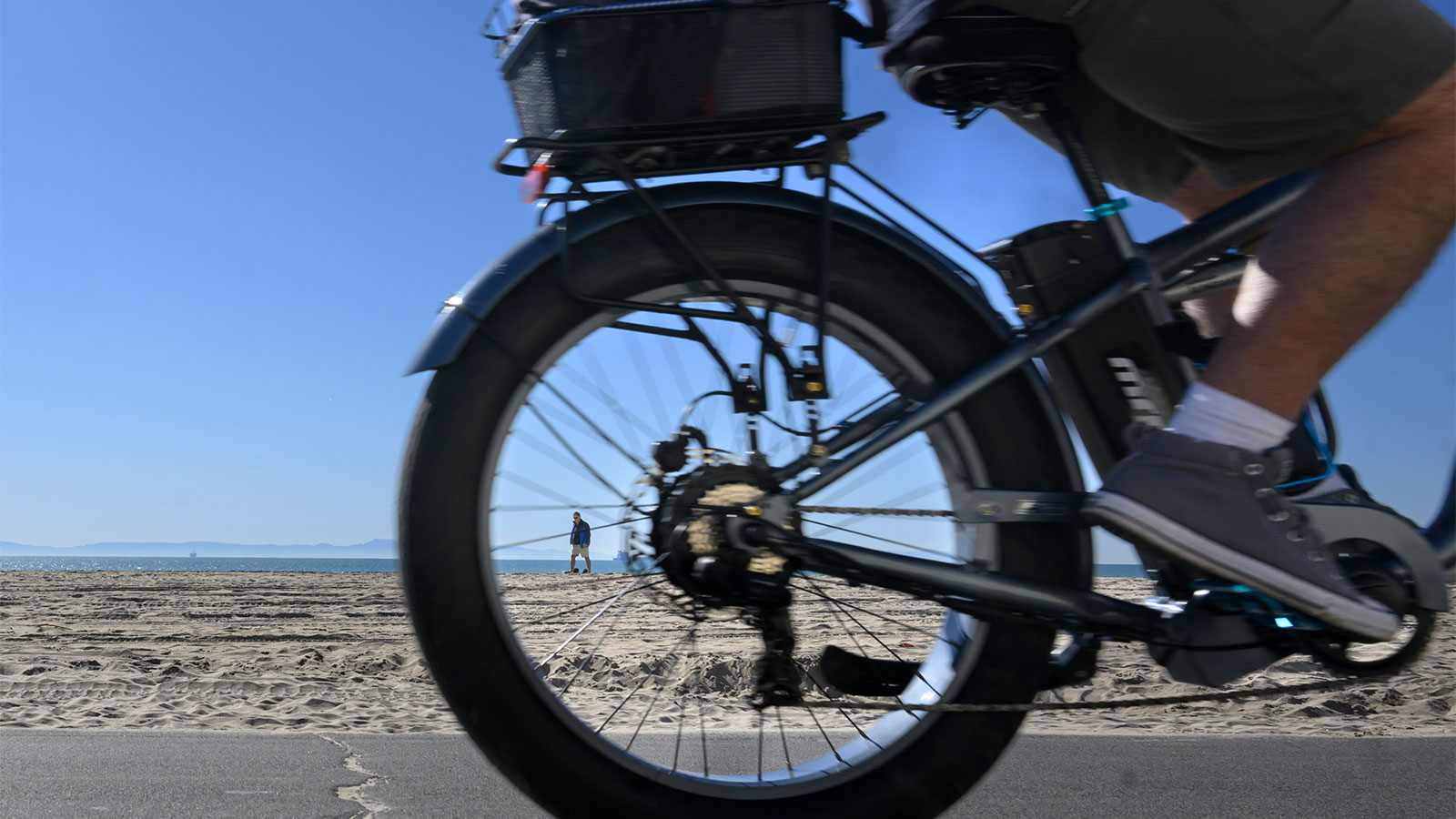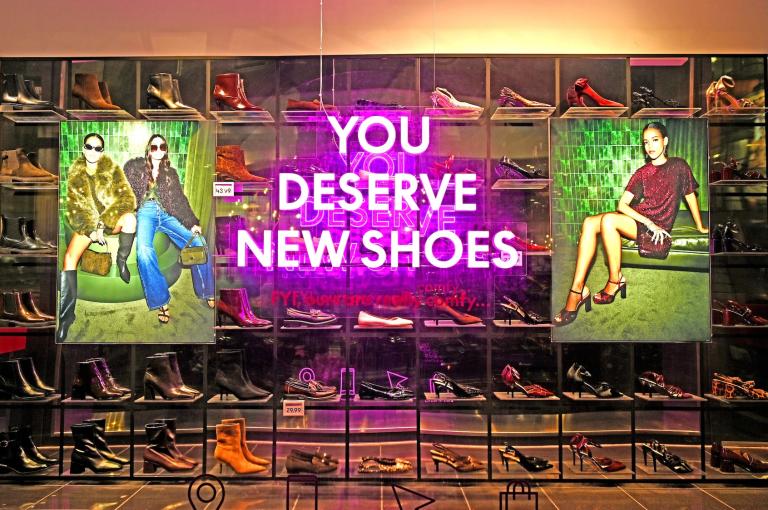This story was co-published with Rappler, a Philippines-based online news publication.
Tina Batalla had owned a bicycle for many years. But it wasn’t until the pandemic that the then-21-year-old university student really started using it to get around Metro Manila after a friend invited her out on a rainy day ride in June 2020.
“There were no cars, and it felt safe,” she said. Riding on streets free of the car traffic that has earned Metro Manila a reputation as one of the most congested urban areas in the world built Batalla’s confidence that she could get around by bike despite not being a “hard-core cyclist.”
“Re-experiencing the city I grew up in clicked a switch in me, and I felt like this is something I want to continue doing,” she said.
Batalla is one of many Filipinos — and people around the world — who embraced biking in a new way during the pandemic. But now, the country’s climate-friendliest mode of transportation besides walking is at risk, as national lawmakers slash the budget for bike lanes — and Filipino cyclists are organizing to ensure that the silver lining of the pandemic leads to lasting improvements in bicycle infrastructure.
Keeping the gains
COVID-19 pushed Metro Manila’s already-struggling public transit system into crisis: The government shut down mass transportation in the city for two and half months in an effort to contain the virus, and after the shutdown lifted, capacity limits forced commuters to wait for up to three hours just to board the Metro Rail Transit, or MRT. Similar wait times plagued buses and jeepneys, iconically Filipino public transit vehicles.
Bike owners outnumber car owners 5 to 1 in Metro Manila, a metropolitan area made up of 16 interconnected cities. The long lines at transit stations left cycling as the most viable alternative for many. Hospitals began setting up bike parking to accommodate the droves of doctors and nurses cycling to work. Local city governments used traffic cones or simple stripes of paint to outline pop-up bike lanes, and the national government’s Department of Transportation, or DOTr, created a new office to focus explicitly on active transport (which includes biking, walking, scooters, and the like). By June 2021, 313 kilometers (194 miles) of new bike lanes had been added to streets within Metro Manila through the combined efforts of local and national governments.
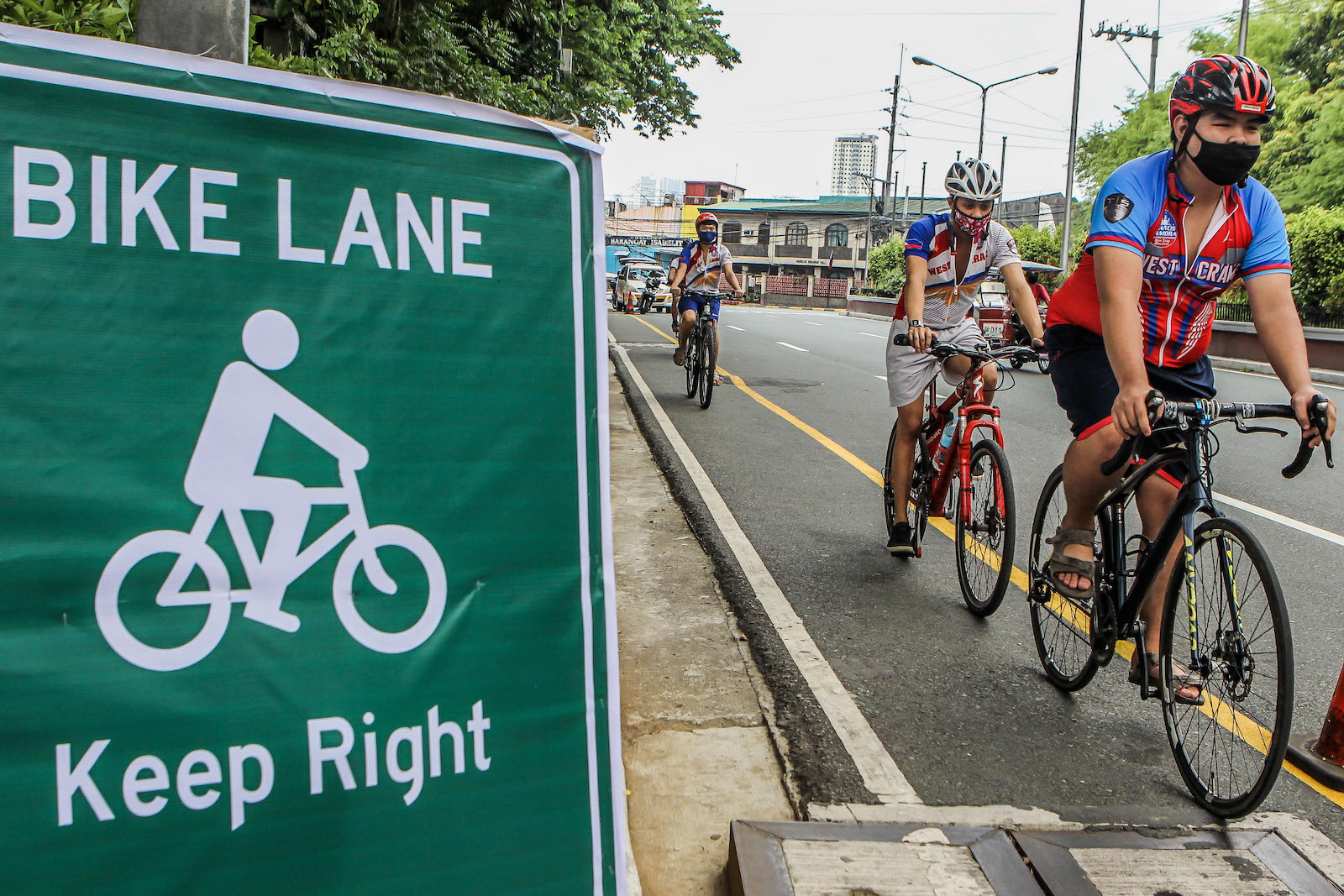
“The pandemic was a huge factor in pushing the Philippine government to prioritize and promote active mobility,” said Eldon Joshua Dionisio, the program manager of DOTr’s active transport office, which has grown to include 14 employees.
Metro Manila’s pandemic cycling boom mirrors a phenomenon experienced in cities all over the world. In the U.S., people began cycling at “unprecedented levels” and bike sales surged. In Europe, more than $1.1 billion dollars worth of biking infrastructure was built between March and October 2020, with cities like Paris and Brussels leading the way. And in South America, cities like Lima and Bogotá began building out bike lanes along routes that had been identified years beforehand but never installed until the pandemic drove more cyclists onto the streets.
All that pedal-pushing has come with a host of benefits. Elijah Go Tian, a lead on the Low Carbon Transport Project at the United Nations Development Programme in the Philippines, noted that switching from cars to bikes drastically lowers climate change-causing emissions. The daily travel emissions of people who cycle are 84 percent lower than those of non-cyclists, according to one Oxford study. More bike trips and fewer car trips also makes for less air pollution, which costs the Philippines approximately $87 billion annually in healthcare costs and productivity loss, according to a 2021 study. Bikes can also reduce car traffic and noise pollution, help riders stay healthier and more active, and provide greater agency over one’s own mobility.
Despite this multitude of benefits, the gains of the last three years are not guaranteed to persist in the Philippines. Though the national government earmarked 4 billion pesos (around $71 million) for active transport from 2020 to 2023, the budget has been cut each year, down to 500 million pesos for 2024 from a high of 2 billion pesos in 2022.
“We have decision-makers who are still car-centric,” Dionisio said.
That drop in funding for the office that oversees safe biking infrastructure could slow progress considerably: A recent survey found that 4 out of 5 household heads in the Philippines agree that more people would use bikes as transportation if the roads were safer.
“The momentum has been slowing down a bit,” said Tian.
Decision-makers in business and politics come primarily from the car-owning class, which can exacerbate inequality, said Earl Decena, a sustainable transportation officer at the business association Makati Business Club. Though only 6 percent of Filipinos own cars, biking has been associated with poverty in the past, and sometimes discriminated against in both the public and private sector.
“The norm, especially pre-pandemic, has been that if you’re on a bicycle, you’re not treated the same way you would be treated if you came in a vehicle,” he said. “There’s an undertone of, ‘If you’re in a car, you can probably pay more.’”
When that attitude gets scaled up to the level of policy, it can enshrine preferential treatment for car owners — rather than the 94 percent of Filipinos who don’t own cars — into law.

Maintaining momentum
Fractured and uneven oversight of biking infrastructure also causes problems for bikers, explained Ramir Angeles. Angeles is a transportation engineer for the government of Quezon City, one of the cities that makes up Metro Manila. Since local government units oversee local roads, while the national government oversees national roads, maintenance of bike lanes can be uneven.
“Bike lanes have now become a much more hostile environment than they were” during the height of the pandemic, said Angeles, adding that the return to pre-pandemic levels of car traffic has escalated the sense of danger for many bikers. And in some parts of Metro Manila, bike infrastructure is actively “being removed or downgraded,” he added.
Batalla has experienced the latter firsthand. When she learned in February that the bike lanes along Ayala Avenue, a major thoroughfare in one of Metro Manila’s busiest business districts, were going to be converted into dreaded “sharrows,” which would force bikers to share a lane with public transit vehicles like buses and jeepneys while leaving private vehicle lanes untouched, she was outraged.
“These bike lanes were so important for the safety of our essential workers … What happens if we have cities that keep on making them work but don’t actually care about their safety?” she asked. “It really hit me that if we did not get on the streets, speak up and organize, those lanes would basically be lost forever.”
Batalla’s response to that frustration was to organize. What started as a one-off group ride in protest of the Ayala Avenue plan eventually grew into the #MakeItSafer campaign, part of a larger transportation advocacy group called the Move As One Coalition. The campaign convinced Ayala Land, the decision-making entity behind the bike lane conversion, to enter into a dialogue with advocates to work towards a different solution. And when Ayala Land “rejected the community’s proposed safety interventions,” Move As One staged another protest ride in July, this time to pressure the decision-makers to fix bike lanes and strengthen enforcement to keep motorcycles out of bike lanes.
Batalla’s experience points to a factor that could help maintain Metro Manila’s momentum: the vibrant community of bikers that has been expanding rapidly since 2020. Cycling clubs started by those riders have been popping up all over the metro area, facilitating group rides, pop-up events, and protests. The result is a network of people across the city who are primed to mobilize to protect bikers’ interests.
And even if cycling isn’t accelerating as quickly as it did in 2020, the numbers of bikers on the roads remain high. A bike count in June 2022 found about 54,000 cyclists on main roads over four hours. Even that number, which Angeles said is an undercount and which was only conducted in four of the 16 cities that make up Metro Manila, makes clear that cyclists remain a sizable demographic.

“Because of the community that was built, because of the people who were awakened, there is a stronger pushback,” said Aneka Crisostomo, a sustainable transport advocate and community manager at Tambay Cycling Hub, a bike shop and gathering spot in Pasig, another city in Metro Manila.
“There are people who are now more vigilant about the road space we deserve, because a lot of us saw that it actually can be done.”
Many businesses are starting to see the value in catering to that growing community, said Makati Business Club’s Decena. Restaurants that earn a reputation for being “bike friendly” by treating bikers as valued customers rather than second-class citizens attract valuable word-of-mouth marketing among the cycling community. He also pointed to larger companies like McDonald’s and Robinsons, a mall chain, that have prioritized safe bike parking.
“The majority of our population, and therefore the majority of our market, is a cycling market,” he said. “If you’re a business, you stand to make more if you cater to the cyclists and pedestrians.”
Ultimately, Decena thinks it’s no big mystery what Metro Manila needs to do to maintain its cycling momentum and deliver a host of climate and health benefits to its citizens.
It doesn’t need to become Amsterdam, Paris, or even Bogotá, which Decena thinks is a more useful comparison than wealthy cities in the Global North. The city just needs its leaders to stick with the initiatives they started during the pandemic — to build out and maintain safe bike infrastructure rather than prioritizing cars at every turn.
“If you plan for transport based on your past patterns, you are always running the risk of replicating whatever patterns have held in the past,” he said. “So there has to come a point where you say, ‘We want to change what that looks like moving forward.’”
